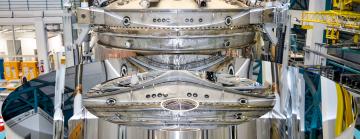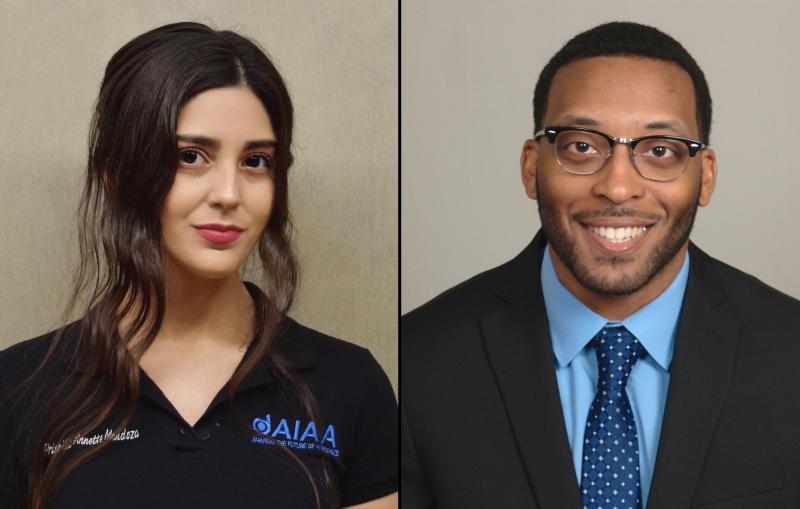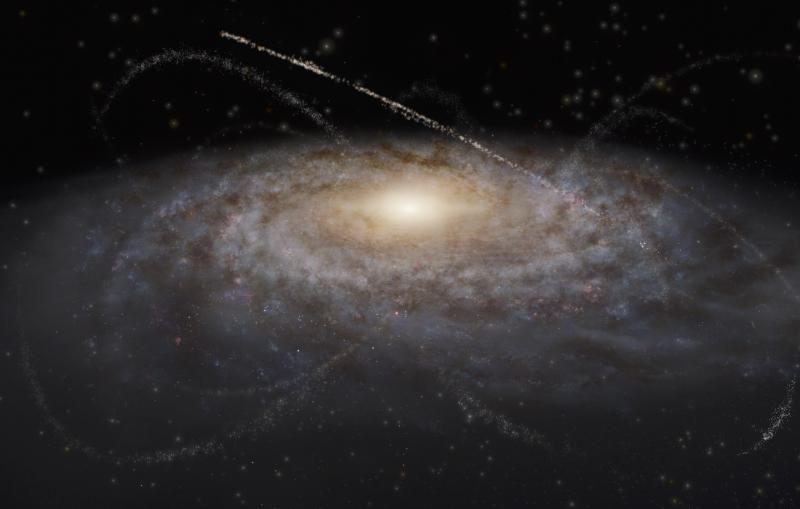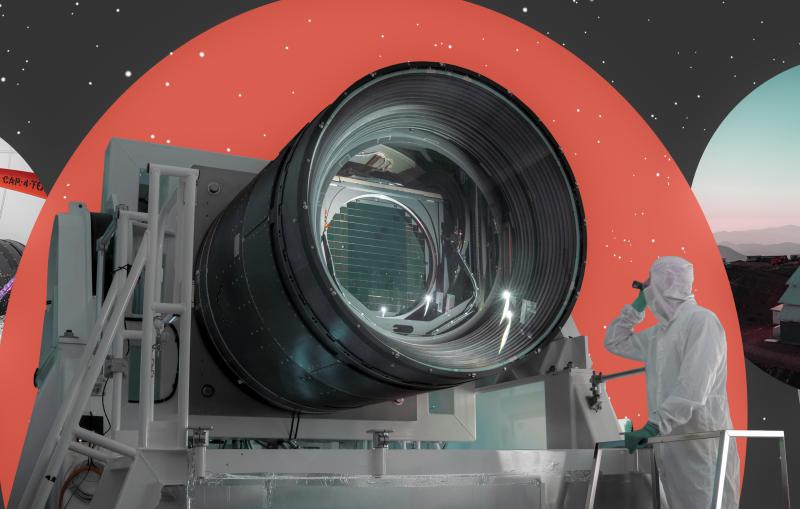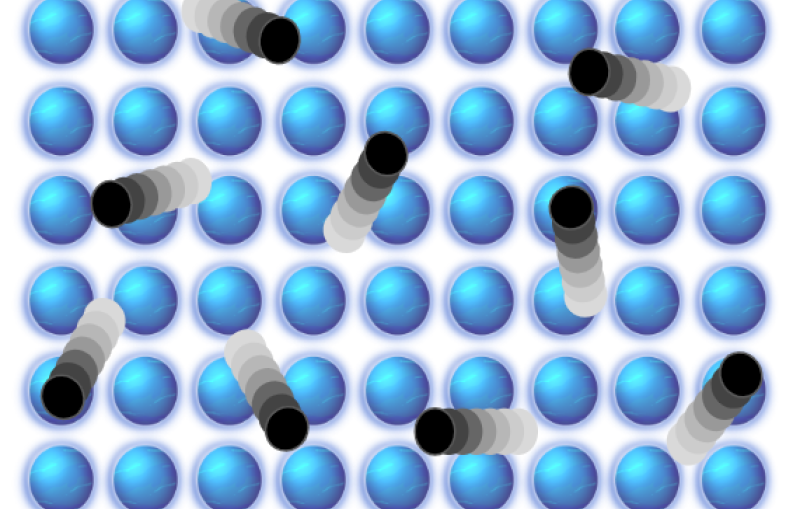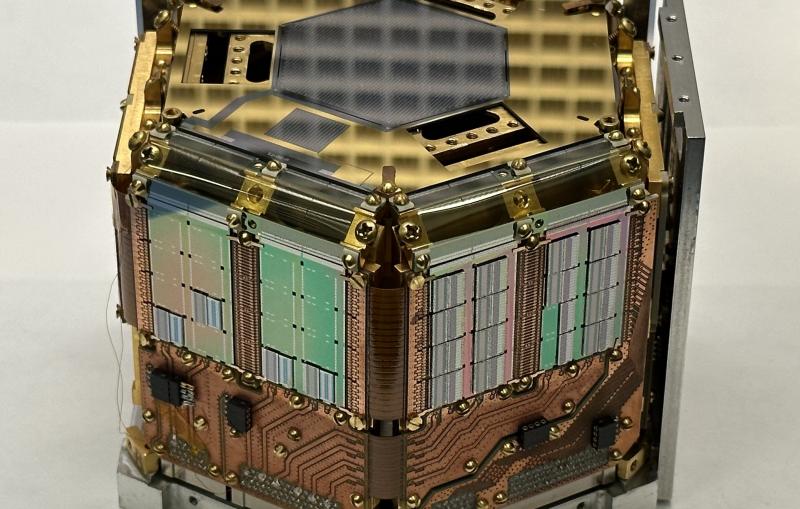Rubin Observatory finishes reflective coating of giant mirror
The first reflective coating was applied to Vera C. Rubin Observatory’s 8.4-meter combined primary/tertiary mirror using the observatory’s onsite coating chamber.
LSST Camera
Vera C. Rubin Observatory will search wide and deep into the cosmos for signs of dark matter and dark energy and yield new insights into our own galaxy and solar system. SLAC built Rubin's LSST Camera (above), the largest camera ever built for astrophysics. SLAC will also host Rubin's U.S. Data Facility and co-lead the observatory's operations along with NSF's NOIRLab. (Image Credit: Jacqueline Ramseyer Orrell/SLAC National Accelerator Laboratory)
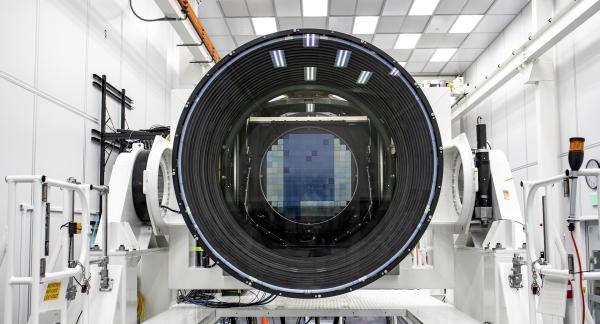
Vera C. Rubin Observatory, a next-generation astronomical facility under construction in Chile funded by the U.S. National Science Foundation (NSF) and the U.S. Department of Energy (DOE), achieved an important milestone on April 27, 2024, with the successful coating of the 8.4-meter primary/tertiary mirror with protected silver. This important event paves the way for the installation of the glass mirrors on the Simonyi Telescope, bringing Rubin Observatory ever closer to revolutionizing the fields of astronomy and astrophysics with its 10-year Legacy Survey of Space and Time (LSST) beginning in 2025. “This milestone represents not just an incredible feat of engineering, but also an important step towards a transformative new era of scientific advancement,” said Edward Ajhar, NSF Program Director for Rubin Observatory.
Rubin Observatory’s primary/tertiary mirror – the only one in the world exactly like it – is an integral component of the telescope’s optical system, which also includes a 3.4-meter secondary mirror and the LSST Camera, the largest digital camera in the world. Fabrication of the mirror began before the rest of the Rubin Observatory components, enabled by major gifts from the Charles Simonyi Fund for Arts and Sciences and from Microsoft founder Bill Gates. The 8.4-meter mirror is made up of two optical surfaces, each with a different curvature, combined into one large structure about as wide as a tennis court. Integrating the two mirrors in this way reduced the engineering and control complexity for the telescope while maintaining its excellent light collecting capacity. The mirror was fabricated over a period of seven years at the Richard F. Caris Mirror Lab (RFCML), of the University of Arizona, Tucson, AZ, beginning in 2008. In 2015, the completed mirror was moved to a secure storage area, and in early 2019 it was shipped to the summit facility on Cerro Pachón.
“This moment, having a completed primary/tertiary mirror, has been decades in the making, starting with the gift of funding by Richard F. Caris to buy the glass from Ohara Corporation that was used to make the mirror blank. Everyone at RFCML and the University of Arizona that have been involved in this project are thrilled that our work on this unique mirror will soon contribute to the success of such an incredible scientific instrument,” said Professor Buell T. Jannuzi, Head of the Department of Astronomy and Director of Steward Observatory at the University of Arizona.
The mirror coating process was carried out safely and efficiently by a skilled team using a state-of-the-art, onsite coating chamber built specifically for Rubin Observatory by Von Ardenne in Deggendorf, Germany. The 128-ton coating chamber, installed on the maintenance floor of the observatory facility, uses a technique called magnetron sputtering to coat mirrors to precise specifications. This technique gives Rubin the flexibility to coat the telescope mirrors with aluminum, silver, or even a combination of both during any coating run. The coating chamber can also be configured for either of Rubin Observatory’s differently-sized mirrors – it was also used to coat the 3.4-meter secondary mirror with protected silver in mid-2019. To coat the 8.4-meter primary/tertiary mirror, the lower half of the coating chamber was removed and the mirror’s vacuum-sealed support structure – called the mirror cell – acted as the base of the chamber.
“We’re thrilled that this very specialized piece of equipment has contributed to achieving the scientific requirements for both of Rubin Observatory’s mirrors,” said Norman Müller, project manager at Von Ardenne, Germany. “Meeting the very demanding homogeneity requirements was definitely a challenge. But we were able to succeed thanks to our extensive experience in building vacuum coating equipment for large surfaces.”
The Rubin coating team, led by Tomislav Vucina, conducted extensive testing to determine the final coating “recipe” – the precise mixture of elements that make up the coating layers, with the goal of achieving the best possible combination of reflectivity and durability. To verify the performance of the chosen mixture, the team coated a steel stand-in mirror that has also been used for testing the telescope mount and other observatory components. After confirming the mixture met the defined requirements, they repeated the process using the glass mirror.
First, the team applied an adhesion layer of nickel-chromium (NiCr) to the glass mirror blank. Then, they applied the reflective layer of silver (Ag). This reflective layer is incredibly thin – the amount of silver used to coat the entire 8.4-meter surface (64 grams) would form a ball about the size of a cherry tomato. After the application of the reflective layer, the mirror received another NiCr adhesion layer, and a final layer of silicon nitride (Si3N4) to protect the reflective coating from dust and other environmental contaminants. “This outer layer needs to be thick enough that it’s not worn off by cleaning,” said Vucina, “but not so thick that it absorbs too many photons and prevents the mirror from meeting Rubin’s scientific requirements.”
The process of coating the mirror took about four and a half hours. After the coating was complete, and to ensure that all the requirements were met, the mirror was moved out of the chamber to a nearby space where – the following day – Vucina and his team conducted a series of tests: reflectivity, adhesion, pinhole, and cosmetic. After analyzing the results of those tests, they declared the coating a success. “This was a very well-conducted project from every angle,” said Vucina, “thanks to a combination of careful planning and the technical skills of our excellent team.”
With its dazzling new coat, Rubin’s primary/tertiary mirror is an important step closer to capturing light from distant celestial objects. “We’re extremely excited that both mirrors are now coated and will be installed on the telescope very soon,” said Sandrine Thomas, Deputy Director for Rubin Construction. “The combined reflectivity of these mirrors will enable Rubin to detect very faint and far-away objects, leading to great science.”
Rubin Observatory is a joint initiative of the US National Science Foundation (NSF) and the Department of Energy (DOE). Its primary mission is to carry out the Legacy Survey of Space and Time, providing an unprecedented data set for scientific research supported by both agencies. Rubin is operated jointly by NSF's NOIRLab and SLAC National Accelerator Laboratory (SLAC). NOIRLab is managed for NSF by the Association of Universities for Research in Astronomy (AURA) and SLAC is operated for DOE by Stanford University. Additional contributions from a number of international organizations and teams are acknowledged.
This article is based on a release from Rubin Observatory.
For questions or comments, contact SLAC Strategic Communications & External Affairs at communications@slac.stanford.edu.
SLAC is a vibrant multiprogram laboratory that explores how the universe works at the biggest, smallest and fastest scales and invents powerful tools used by scientists around the globe. With research spanning particle physics, astrophysics and cosmology, materials, chemistry, bio- and energy sciences and scientific computing, we help solve real-world problems and advance the interests of the nation.
SLAC is operated by Stanford University for the U.S. Department of Energy’s Office of Science. The Office of Science is the single largest supporter of basic research in the physical sciences in the United States and is working to address some of the most pressing challenges of our time.
